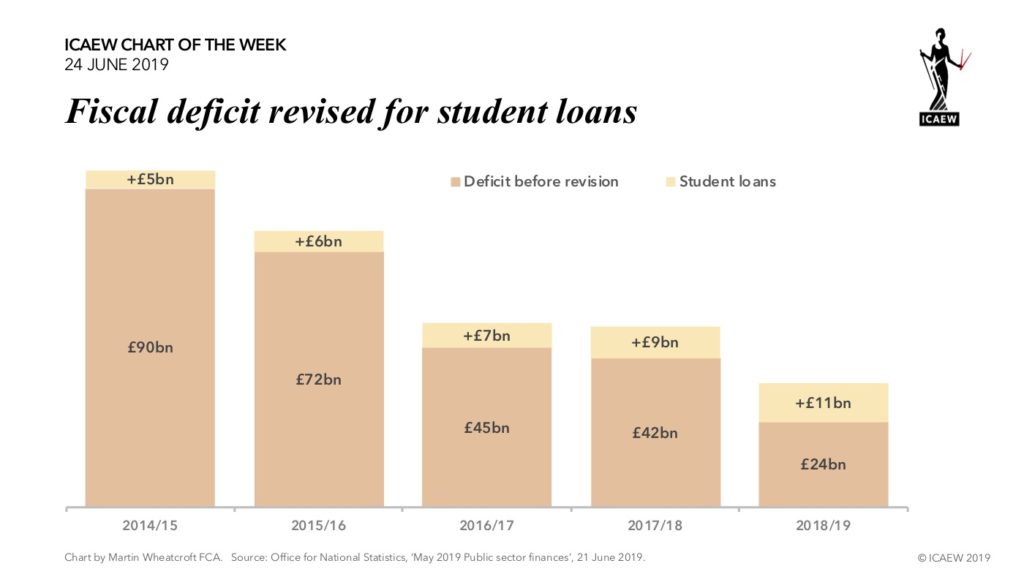
The treatment of student loans in the fiscal numbers has long been controversial, but on Friday the ONS announced that they are finally changing to an approach that better reflects the economics. This means that expected non-payments will now be recognised immediately within the fiscal deficit rather than waiting until thirty years’ time when outstanding loan balances are officially written-off.
As the #ICAEWchartoftheweek highlights this will mean revising the fiscal deficit upwards, with the deficit for 2018/19 increasing from a provisional result under the current rules of £24bn to £35bn under the new treatment. This reflects an £8.2bn expense for the estimated 52% of the new loans provided to students during 2018/19 that are not expected to be repaid, together with a reduction of £2.4bn in interest income on existing loans not anticipated to be recovered either.
This change has no effect on public sector net debt (which has never netted off student loans), but it will increase another fiscal measure – public sector net financial liabilities (which does) by £59bn. This represents the adjustment needed to get from the face value of outstanding student loans and interest to the discounted value of expected recoveries.
This brings the fiscal treatment closer to the accounting treatment under IFRS used in the Whole of Government Accounts, although there will still be some differences. In particular, accounting losses recorded on the sale of parts of the student loan portfolio will generally not be included in the fiscal deficit.
This is a welcome improvement in the way the fiscal numbers are calculated that better reflects the economics of student loans – even if not going to the full extent of aligning with accounting standards.
This is not the only adjustment planned by the ONS. Rather strangely (at least from an accounting perspective) the ONS has decided to reduce public sector net debt by an estimated £31bn for gilts held in ring-fenced local authority and other pension funds, despite the fact that the headline fiscal numbers do not include the related pension obligations.
For more information, read the May 2019 Public Sector Finances on the ONS website.